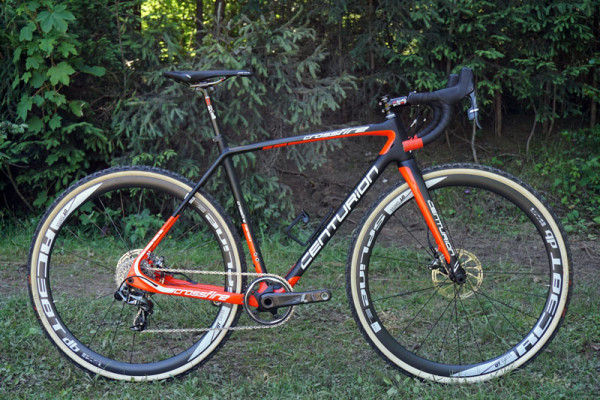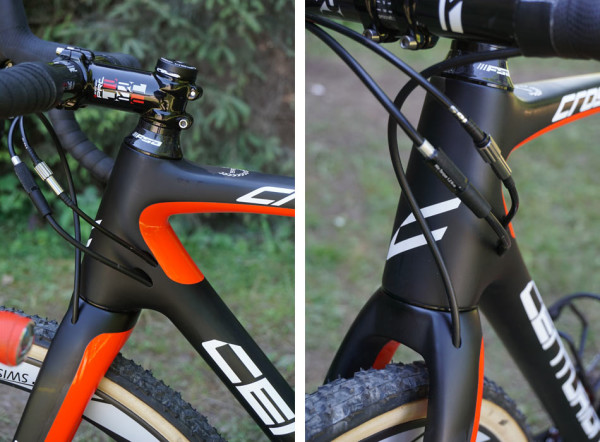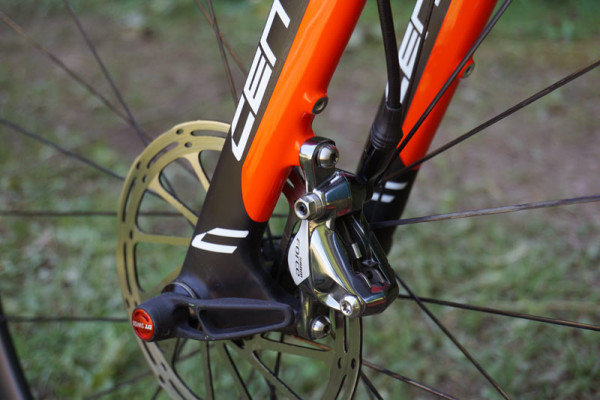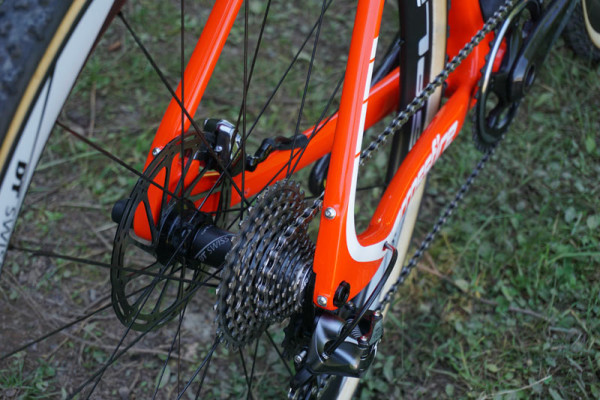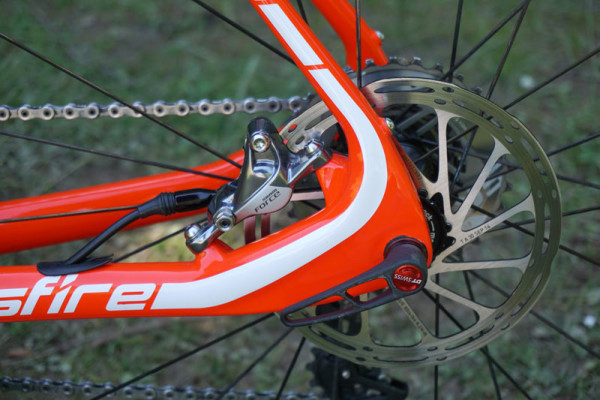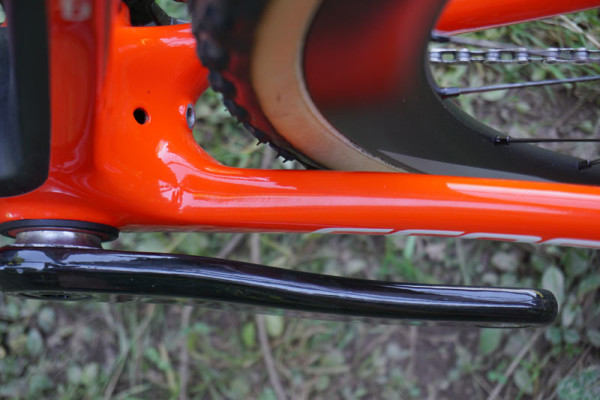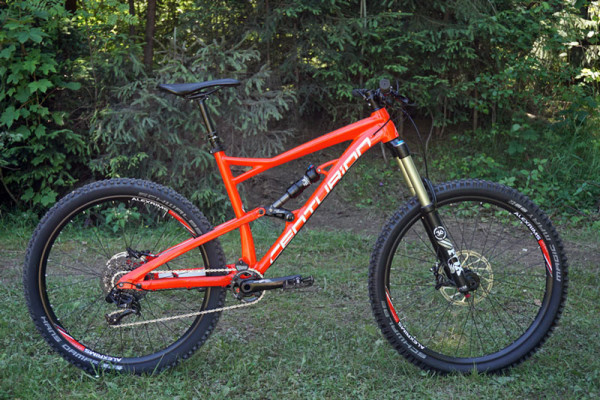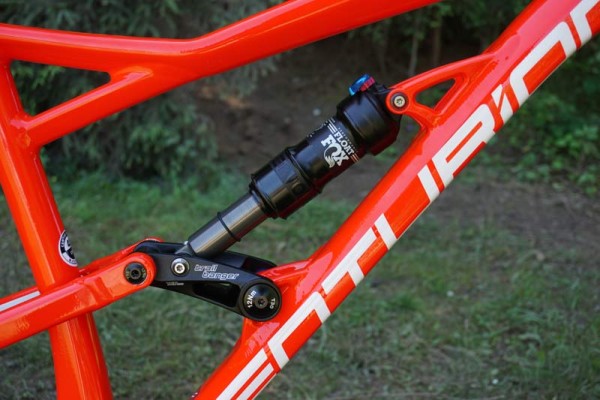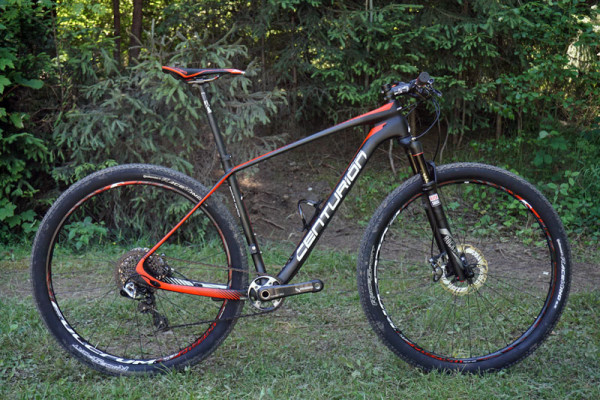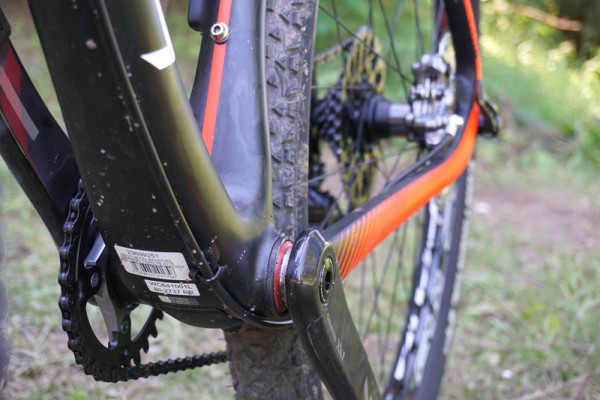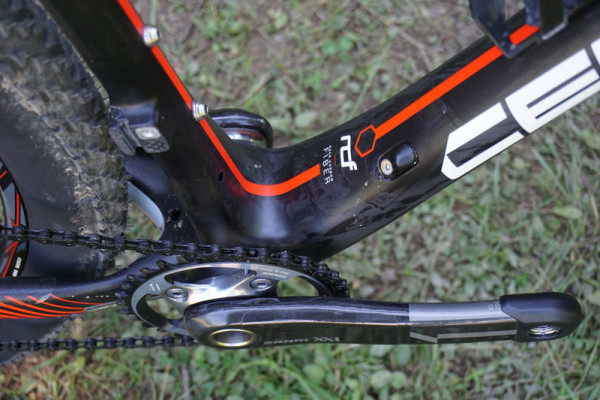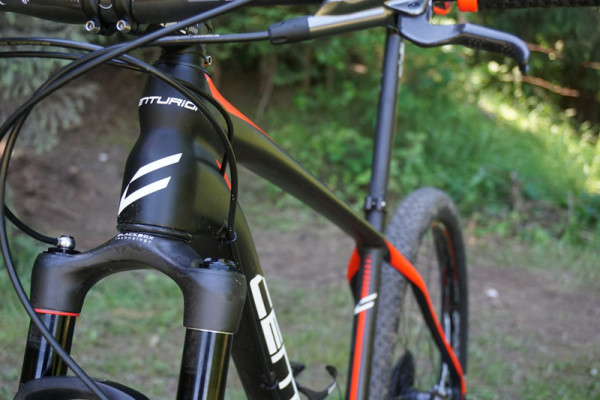The 2016 Centurion Crossfire puts them back in the game with a carbon cyclocross after focusing on alloy all-purpose ‘cross/allroad bikes for the past four years.
Merida is sharing the same frame, but it and the fork was developed by Centurion. Centurion has been made by Merida since the get go, but Centurion was doing a lot of interesting development. Over the years, they started working together more and more, and this is the latest collaboration.
Claimed frame weight is 1100g and fork is 425g. It’s ready for Di2 or mechanical 1x and 2x groups, and everything runs internally.
It gets a 15mm front thru axle with accessory mounts just above the brake caliper, making it easier for racks and such to clear the brake system.
Similar mounts for rack and fenders are on the back of the bike.
Massive dropout sections combined with a 12×142 thru axle system should make the bike especially stiff.
Look for this and the other bikes to become available later this year.
The Trailbanger is back in the line after a year hiatus, and it’s bigger and badder than ever with a 165mm rear end, massive 170mm Fox 36 fork and 27.5″ wheels.
That rear travel splits the difference between the 160/170mm versions of years past, but the bigger news is that this new model is their first Horst Link full suspension bike. It moves the rocker arm and shock around, too, putting it all lower in the frame for a better center of gravity.
They told us the Horst Link design gives it neutral braking and short 420mm chainstays. The frame is made for 1x drivetrains only and specs a 200mm front rotor and big 180mm direct mount rear rotor.
The stack-to-reach ratio is optimized across all frame sizes, so fit and ride characteristics are the same no matter what size you buy. They pointed out that this matters because should you read a review of the bike somewhere by someone riding a different size than you need (like the one below), their opinions on fit should carry over well regardless.
I took this bike out for a run down the Fleckalm trail in Tyrol, Austria, and it absolutely ripped. It was my fourth run down the lift-served trail, so I was familiar enough with it to let off the brakes more and more, and the Trailbanger took every hit in stride. More and more “enduro” bikes are sitting in at 150mm to 160mm travel these days, so having that little extra along with an appropriately slack head angle let me get more aggressive over the obstacles.
Without spending much time dialing the rebound and compression, especially in the rear, I’ll say that the bike wasn’t popping off the ground over the risers and small tabletops (nothing like Whistler in terms of jumps), but it could still get airborne with ease.
Pedaling hard between sections or even sitting and spinning up the few inclines were all done with the Fox rear shock in open/descend mode and it was fine. Most of the trail is pointing decidedly downward, but it does have a mix of steep-and-short uphill punches that are anything from wooden ramp features to rooty, rocky sections, plus a couple moderate singletrack climbs. The Trailbanger was surprisingly well behaved on all of them, making it well suited to enduro where you do actually have to ride up the mountain between timed sections. That said, it is a big, strong, alloy bike, so it’s not light compared to carbon competitors. Based on my fast and furious ~25 minute run, it’s certainly worth a test ride.
The 2016 Backfire 29er hardtail gets a new frame that’s ~220g lighter thanks to new fibers and better optimized tube shaping. Frame weight is 920g (down from 1150g) for the 43cm frame size. All sizes are claimed under 1,000g in top trim using the Race Carbon Fiber.
There’ll also be a Performance level carbon version that uses the old fiber types but new shapes, and those weigh in at the same 1,150g as before.
It’s 1x, 2x, Di2 and Sideswing compatible.
